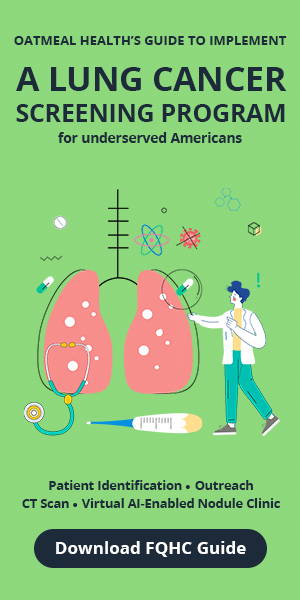Share this article and save a life!
Introduction
In 2023, healthcare organizations are recognizing the importance of increasing patient engagement to achieve lasting patient results. By actively involving patients in their own healthcare journey, providers can improve patient retention, increase satisfaction, and enhance overall healthcare outcomes. In this comprehensive guide, we will explore the concept of patient engagement, and its significance, and provide the nine best strategies to improve patient engagement rates in your organization. Each strategy will be accompanied by detailed steps and tips to help you implement them effectively.
What is Patient Engagement?
Patient engagement refers to the level of active involvement a patient has in their own healthcare journey. Active engagement includes actions such as maintaining appointments, managing chronic conditions, asking questions, participating in treatment decision-making, and adhering to treatment plans. It is important to note that patient engagement is a two-sided process, involving both the patient and healthcare professionals. Providers have a crucial role in educating patients about their conditions and involving them in the decision-making process.
Importance of Patient Engagement in Healthcare
High levels of patient engagement yield benefits for both patients and providers. For patients, increased engagement leads to improved health outcomes. Patients who actively participate in their care by attending visits and communicating their concerns to providers are more likely to understand and follow treatment plans. This results in better health outcomes and reduces the need for additional medical treatment, thus saving patients money on healthcare costs. Engaged patients also report higher levels of satisfaction with their healthcare experience.
Healthcare providers also benefit from patient engagement. When patients actively participate in their own care, providers can make more informed clinical decisions. Involving patients in the decision-making process leads to improved health outcomes, strengthens the patient-provider relationship, and enhances patient retention. For clinical care to be truly effective, it requires the collaboration of both patients and healthcare providers.
Understanding the Patient Journey: When Does Patient Engagement Begin?
Patient engagement starts well before the patient meets with a healthcare provider. It is important to understand the entire patient journey and identify areas where engagement can be improved. The patient journey begins with the initial scheduling of the visit, continues through the check-in process, and extends to the aftercare and payment collection stages.
Before the Visit: The check-in process for an appointment is not the starting point for patient engagement. By that time, patients have likely interacted with your practice multiple times, including scheduling visits, completing intake forms, receiving appointment reminders, and making copayments. Identifying any gaps or sticking points in this process is crucial to improving patient engagement.
During the Visit: During the visit, healthcare providers have an opportunity to engage patients and improve their health outcomes. This can be achieved by educating patients about their conditions and treatment options, fostering open communication, involving patients in decision-making, assisting them in setting goals and action plans, promoting patient autonomy, and providing resources for self-management.
After the Visit: Aftercare is a critical element of patient engagement. Studies have shown that a significant number of patients misunderstand or ignore aftercare instructions. Ensuring patients understand and follow post-visit instructions is a key benchmark for patient engagement. The final step in the patient journey involves payment collection, where it is essential to consider factors such as ease of payment, timeliness of payment requests, and providing flexible payment options.
9 Best Strategies to Increase Patient Engagement
1. Identify At-Risk Patients
Early identification of at-risk patients enables proactive outreach and engagement. By understanding the concerns and barriers these patients face, healthcare teams can tailor their engagement efforts to meet their specific needs. For example, telemedicine can be a viable option for patients prone to missing appointments, as it has been shown to have lower no-show rates.
Learn more with my previous post – From Invisible to Invaluable: How to Effectively Outreach to Underinsured and Uninsured FQHC Patient Populations
2. Automate Patient Engagement
Automating different steps of the patient journey can significantly enhance patient engagement. By utilizing artificial intelligence and innovative technologies, healthcare organizations can improve the patient experience and increase engagement. Some automation strategies to consider include:
– Patient self-scheduling: Implementing online scheduling systems allows patients to conveniently book appointments at their preferred time slots.
– Digital forms: Replace paper forms with digital versions that can be filled out online, reducing administrative burden and streamlining the check-in process.
– Automatic collection of copays: Simplify the payment process by automating copay collection, making it seamless for patients.
– Self-check-in: Enable patients to check in electronically upon arrival, reducing wait times and improving efficiency.
3. Provide Patient Education
Health literacy plays a crucial role in increasing patient engagement. When patients have a better understanding of their health conditions, they are equipped with the knowledge to make informed decisions. Providing educational materials and resources can significantly impact engagement. Consider the following tips:
– Use plain and simple language: Avoid medical jargon and technical terms during patient interactions. Explain concepts in a way that patients can easily comprehend.
– Visual aids: Utilize diagrams, illustrations, and videos to simplify complex topics and make them more accessible to patients.
– Written materials: Provide patients with take-home materials that reinforce the information discussed during visits. These materials serve as valuable references for patients.
4. Use Technology
Leveraging technology can empower patients to access information, communicate with their care teams, and manage their health effectively. Here are five ways technology can increase patient engagement:
– Convenience: Offer online platforms and mobile health applications that allow patients to access their health information, schedule appointments, fill out forms, monitor their progress, and make payments conveniently.
– Improved self-management: Provide patients with tools and portals to track and manage their health conditions, such as monitoring vital signs or requesting medication refills.
– Enhanced communication: Utilize secure two-way messaging and telehealth services to facilitate communication between patients and healthcare providers. This enables patients to receive updates on their care, ask questions, and seek guidance.
– Increased access to care: Telehealth services can extend healthcare access to patients in rural or underserved areas, ensuring they receive timely care.
– Better data tracking: Encourage patients to use mobile health technology to track their health data over time. This allows them to identify patterns and trends, empowering them to actively participate in their care and share valuable insights with their healthcare providers.
5. Minimize Barriers
Transportation difficulties and scheduling conflicts often pose barriers to care and impact patient engagement. By addressing these barriers, healthcare organizations can improve patient engagement. Consider the following steps:
– Telehealth adoption: Implement telehealth services to provide convenient access to care for patients who face challenges in physically visiting healthcare facilities.
– Flexible scheduling options: Offer patients the flexibility to modify or reschedule their appointments online. This ensures that appointments can be easily accommodated within patients’ busy schedules.
6. Foster Clear Communication
Clear and open communication is crucial for patient engagement. Effective communication involves involving patients in decision-making, sharing care plans, and treatment options, and discuss expected outcomes. Consider the following approaches:
– Shared decision-making: Encourage patients to actively participate in the decision-making process of their care. Present them with options, discuss the pros and cons, and consider their preferences and values.
– Language services: Ensure access to language interpretation services when necessary. This may involve utilizing interpreters or translators to bridge language barriers. Telehealth can be particularly helpful in providing frictionless translation services.
7. Provide a Pathway for Continuous Improvement
Continuously evaluating and improving patient engagement strategies is essential for long-term success. Collecting feedback from both patients and providers throughout the patient journey helps identify areas for improvement. Consider the following steps:
– Request patient feedback: Actively seek feedback from patients about their experience at different stages of their healthcare journey. This can be done through surveys, online reviews, or feedback forms.
– Analyze feedback data: Gather and analyze feedback data to identify patterns, trends, and areas for improvement. Look for common themes and address any recurring issues promptly.
– Incorporate feedback into improvement initiatives: Use the feedback received to inform future improvements and adjustments to patient engagement strategies. Involve relevant stakeholders in implementing changes to ensure their effectiveness.
8. Create a Culture of Engagement
Establishing a culture of engagement within your healthcare organization is crucial for fostering patient engagement. Encourage staff members to prioritize engagement and recognize and reward those who excel in engaging patients. Consider the following approaches:
– Clear and easy-to-understand information: Ensure that information provided to patients is clear, concise, and easily understandable. Avoid using medical jargon or complex terminology.
– Encourage patient questions: Create a welcoming environment where patients feel comfortable asking questions and expressing their concerns. Actively listen and provide thoughtful responses.
– Involve patients in decision-making: Include patients in the decision-making process when developing care plans. Seek their input and consider their preferences and goals.
– Easy communication channels: Provide patients with secure two-way messaging platforms or health portals where they can easily ask questions and receive timely responses.
9. Track Progress
Monitoring key performance indicators (KPIs) related to patient engagement is essential for assessing the success of your strategies. While patient satisfaction is a significant KPI, there are other metrics to consider. Track and analyze various KPIs to identify areas of improvement. Consider the following steps:
– Routinely track patient satisfaction: Monitor patient satisfaction levels through surveys, feedback forms, or online reviews.
– Identify relevant KPIs: Determine which KPIs align with your patient engagement goals and organizational objectives. This may include metrics such as appointment adherence rates, patient portal utilization, or patient-reported outcomes.
– Use data analytics tools: Leverage data analytics tools to gather and analyze data related to patient engagement KPIs. This helps in identifying trends, and areas of improvement, and measuring the impact of implemented strategies.
Conclusion
Increasing patient engagement is a key priority for healthcare organizations in 2023.
By implementing effective strategies and leveraging technology, providers can empower patients to actively participate in their healthcare journey, leading to improved outcomes and satisfaction.
The nine strategies outlined in this guide – identifying at-risk patients, automating patient engagement, providing patient education, using technology, minimizing barriers, fostering clear communication, providing a pathway for continuous improvement, creating a culture of engagement, and tracking progress – offer actionable steps to enhance patient engagement in your organization.
By prioritizing patient engagement, healthcare providers can achieve professional and financial success while delivering high-quality care to their patients.
Share this article and save a life!
Author:

Jonathan is a seasoned executive with a proven track record in founding and scaling digital health and technology companies. He co-founded Oatmeal Health, a tech-enabled Cancer Screening as a Service for Underrepresented patients of FQHCs and health plans, starting with lung cancer. With a strong background in engineering, partnerships, and product development, Jonathan is recognized as a leader in the industry.
Govette has dedicated his professional life to enhancing the well-being of marginalized populations. To achieve this, he has established frameworks for initiatives aimed at promoting health equity among underprivileged communities.






